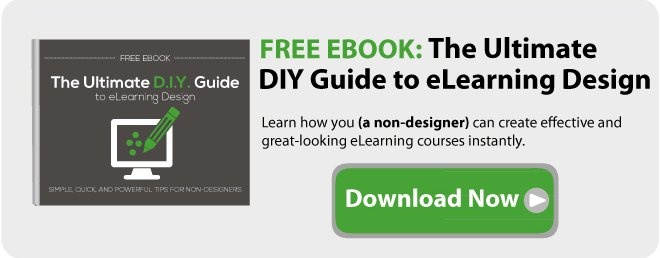 Getting a learner’s attention is a holy grail among instructional designers and learning professionals. Attention, after all, is key to controlling the amount of time necessary to maintain information in “working memory.” In short, attention directs the outcome of learning.
Getting a learner’s attention is a holy grail among instructional designers and learning professionals. Attention, after all, is key to controlling the amount of time necessary to maintain information in “working memory.” In short, attention directs the outcome of learning.
Attention, however, isn’t as simple as you think it is. There are many factors that influence it; motivation and anxiety to name a few. There is, more importantly, a complex scientific process behind it. A part of the brain, for instance, focuses attention, it acts as a filter that sorts out important from unimportant information. It’s called the Reticular Activating System (RAS).
Here are some attention-specific guidelines to help you get started:
Rule #1: Offer Something New or Different, and People Will Pay Attention
Neuroscientists say the brain pays more attention to what’s new or different. It's natural for us to get curious about something new, foreign, weird, unpredictable or different. That’s because our brain is hardwired for it. It ignores anything that's predictable, repetitive, old or just plain boring.
You can easily attract your learners' attention or provoke their curiosity by introducing novelty. The new and unfamiliar can motivate learners as they encounter something different than expected.
Use fresh examples. Surprise them with new data or present a scenario that’s completely unpredictable. Look for unconventional stories where content could apply. Or, engage students through games and simulations that require learners to apply the information in unfamiliar contexts.
Rule #2: The Zero Second Rule
This “zero second rule,” states that people make immediate, subconscious judgments to cement their perspectives. It’s the same rule behind “instant attention.” When learners, for instance, decide that your cluttered screen presents too much challenge, they will naturally avoid it in a few seconds. No questions asked.
There are at least two lessons here. One, don’t let a cluttered interface or messy layout blow away a learner’s attention. Two, for best results, you need to act fast when grabbing attention.
Rule #3: Understand that People Read Differently On Screen
Experts agree that we read differently on a computer screen. Many of them would even argue that we don’t read but scan. But let’s forget about verbs and talk about the how instead. How do people read on screen? The answer will guide you in planning the design. It will help you strategically place important elements on screen so that they get the most attention from learners.
In 2007, the Poynter Institute released the “Eyetracking the News” study. Its findings still apply today. It revealed, among others, that you can grab attention through navigational or directional tools, graphics or photos and headlines. But you can only do so in a fraction of a second to a few seconds. Why? Because people scan first before they decide to read. They look at the most important parts, check which is worth reading and then make a decision. Will they stay or switch off? Make it easier for learners to stay and focus. Here's how:
- Present an idea as simple as possible. It should be easily digestible or understandable.
- Start with the most important things first. Assume that your readers has less than five minutes.
- Break your content into small chunks. Don’t break just for the sake of “breaking.” Break for the sake of helping learners better understand your content.
Rule #4: The Brain Pays More Attention to Things in Contrast to Other Things
Are there any elements here that are in contrast to things that came before? The human brain asks this question on a regular basis. Its hardwired to look for contrast as if its survival depends on it. Truth is the brain will always pay more attention to things in contrast to other things.
Dr. John Medina, a developmental molecular biologist known for his book Brain Rules, said: "We pay lots of attention to color. We pay lots of attention to orientation. We pay lots of attention to size."
Let's say you're writing a shopping list of ten items. Nine items are written in blue and the remaining one is written in red. If you're asked to memorize the list, which item do you think you'll remember best? The red one definitely, that's no-brainer. That's contrast at work.
Pay attention to your own eLearning material and make sure to incorporate the element of contrast. Start with color and size:
- Use large fonts for headlines. Bold or italicize other content you want to stand out.
- Use a different color for emphasis or content you wish to distinguish.
Rule #5: People Will Want More If You Make Them To
Knowing how to make people want more is a very powerful weapon in advertising. But you can also use it to help people achieve their learning goals or improve their learning outcomes.
You can make learners want more by using some tried and tested methods. Here's a few:
- Reveal short, easily digestible piece of information at a time. These "teasers" will show learners that there is more of it they might be interested in.
- Use the element of surprise. Grab their attention by introducing something unpredictable and generating a sense of anticipation.
By following these five basic rules, you’ll keep learner's attention where it belongs: on your information.




